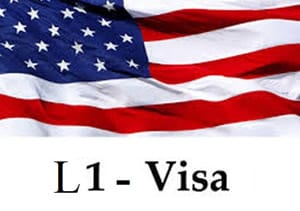
U.S. employers are able to use the L-1 visa to transfer employees from abroad to work in managerial, executive and specialized knowledge roles. The employees must have worked for a company abroad for at least 1 year within the last 3 years in a managerial, executive or specialized knowledge role and the company abroad must have a qualifying relationship with the U.S. company. The L-1 visa can be granted for up to 7 years for managers and executives and up to 5 years for specialized knowledge employees.
The L-1 visa is also a dual intent visa, meaning that employees on L-1 visas can have the intent to immigrate permanently to the U.S., even though they are on a nonimmigrant (temporary) visa. As an employer, you may decide that you want the employee to remain in the U.S. beyond the 5 or 7 years allowed on the L-1. Once you have made this decision, the next step is to commence the green card process.
L-1A executives and managers may be eligible for an EB1C, multinational manager or executive green card, while L-1B specialized knowledge employees can often be sponsored through the PERM process, where the company tests the labor market to see if there are any available, willing and qualified U.S. workers for the role. L-1A applicants can also be sponsored through this process if they are not eligible for the EB1C category. As the employer, you will be responsible for testing the labor market (if you are doing a PERM) and for preparing the I-140, Immigrant Petition for an Alien Worker. The I-140 applies to both the EB1C category and the EB2 or EB3 categories. As part of the green card process, the applicant will file an I-485 adjustment of status application, which is the application that adjusts the person’s status from L-1 to green card holder. When the I-485 is filed, the applicant can also file for a separate work authorization document, using Form I-765. The work authorization can be renewed in increments of 1 year for as long as the I-485 is pending. The applicant can also file for travel authorization to allow them to travel while the application is pending.
One question that can arise is whether your company should continue to extend the L-1 visa once the applicant has work authorization. There are some costs associated with extending the L-1 visa, including filing fees paid to the U.S. government & fees paid to immigration counsel to prepare the application. Additionally, there is a rising trend in the government issuing Requests for Evidence, even for L-1s that were previously approved. As described above, some of the factors that may weigh against renewing the L-1 are the costs and the risk of getting a Request for Evidence or even a denial.
However, there are also some important benefits to renewing the employee’s L-1 status. One benefit is that it allows the employee to maintain underlying status. If the employee is relying solely on the work authorization card and the adjustment of status is denied for any reason, the employee will no longer have any ability to remain the U.S. They will need to depart the U.S. immediately and you will need to figure out how to replace that role in the U.S. on short notice. Additionally, renewing the L-1 visa will give your employee a greater ability to travel. If the employee does not have an L-1, their ability to travel depends on whether they have a valid travel authorization document from USCIS. They are eligible to renew this travel authorization document as long as the green card application is pending, but renewals can take several months and there are no automatic extensions. If you need the employee to travel internationally for a business trip and they do not have a valid travel authorization document, they will not be able to attend the business trip. In contrast, the L-1 application can be processed through premium processing, where the government will provide a response to the application (approval, denial or Request for Evidence) within 15 days. The employee can then take that approval to a Consulate and get the visa issued and will be able to travel freely. (Please note that at the current time there is a Presidential Proclamation restricting L-1 visas. This restriction is set to expire on December 31, 2020. If you are considering renewing the L-1 visa in 2020, you should speak with experienced immigration counsel to understand all the options). A final reason to renew the L-1 visa is that it may give your employee more security and peace of mind.